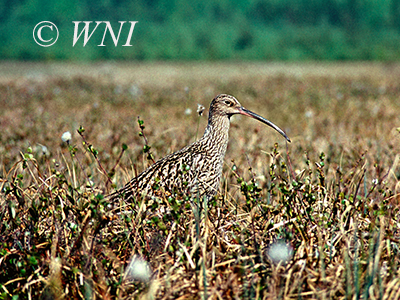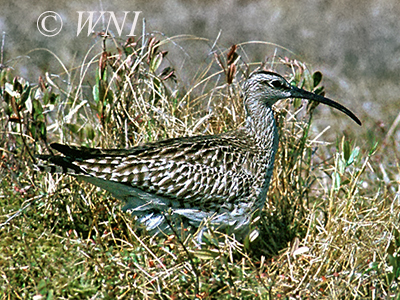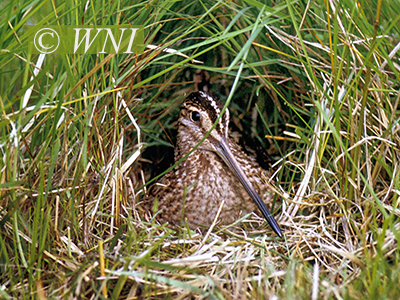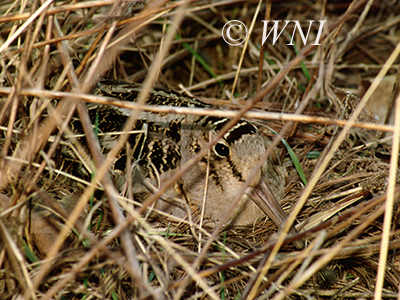| Sandpipers, Snipes, Curlews, and Phalaropes (Scolopacidae) |
The Scolopacidae include 15-21 genera and 90-95 species of sandpipers, curlews, godwits, snipes, woodcocks, and phalaropes. The family is distributed worldwide (except Antarctica), but the majority of species nests in tundra and boreal forest zones of the Northern Hemisphere; other species breed in grasslands, beaches and forests, e.g., in the tropics. These are small to medium-sized birds with streaked brown, tan or gray plumage, narrow wings and long legs. Bill length and shape are quite variable. Most species nest on the ground, laying eggs in a scrape or a depression. The nest may be fully exposed or well camouflaged by overhanging vegetation. Few species lay in old nests of songbirds built in trees. Clutch normally consists of 3-4 eggs; incubation lasts 20-30 days, depending on the species. The young are precocial. The majority of Scolopacidae feed on small invertebrates found in the mud or soil.
| Numeniinae | ||
 |
Eurasian Curlew (Numenius arquata) |
|
 |
Whimbrel (Numenius phaeopus) |
|
| Scolopacinae | ||
 |
Common Snipe (Gallinago gallinago) |
|
 |
American Woodcock (Scolopax minor) |
|
| Unauthorized use of our images is NOT permitted. | ||
| Hotlinking or "pinning" of our images to websites is STRICTLY PROHIBITED. | ||
| Copyright © Michael Patrikeev - All Rights Reserved | ||
| |
||





